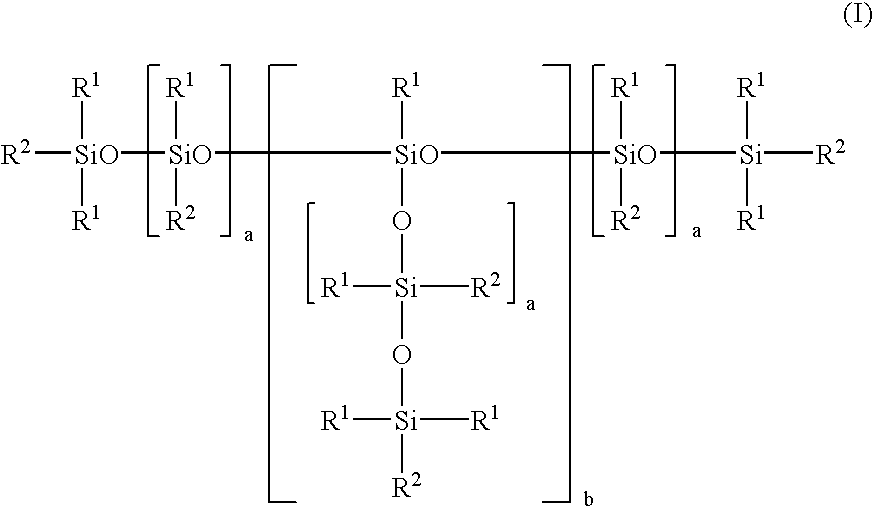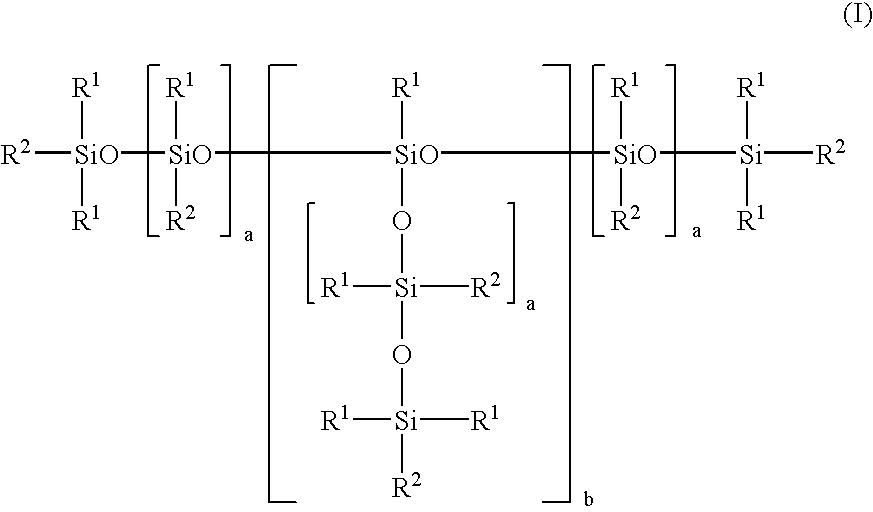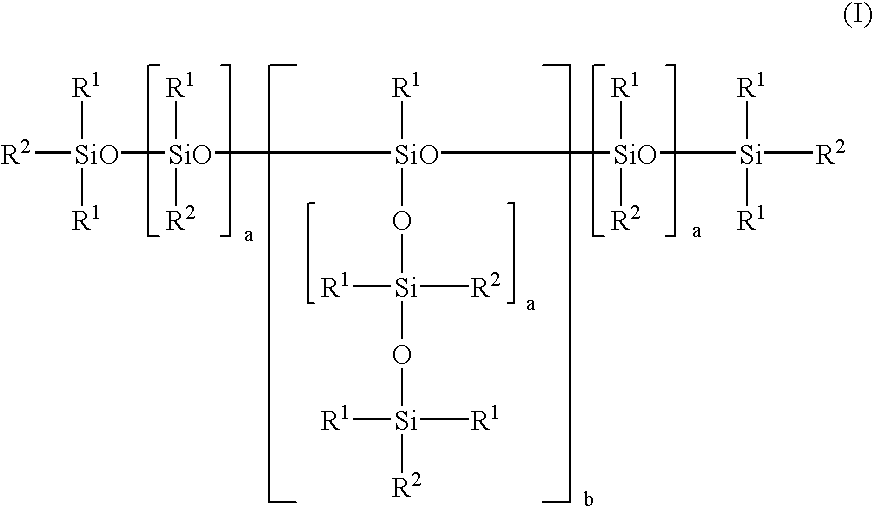Use of mixtures of organofunctionally modified polysiloxanes with branched alcohols in the production of flexible polyurethane foams
a technology of organofunctionally modified polysiloxanes and branched alcohols, which is applied in the field of improved stabilizer systems in the production of flexible polyurethane foams, can solve the problems of irregular or coarse cell structure, increased demands on cell formation characteristics, and inability to meet the requirements of cell structure in some cases, so as to achieve the effect of improving stabilizer systems
- Summary
- Abstract
- Description
- Claims
- Application Information
AI Technical Summary
Benefits of technology
Problems solved by technology
Method used
Image
Examples
examples
[0106] A flexible polyurethane foam was produced in an open wooden box having dimensions of 27.times.27 cm and a wall height of 27 cm by foaming a polyurethane formulation comprising the following constituents:
1 100 parts of a trifunctional polypropylene glycol having an OH number of 56 (Desmophen .RTM. 7186) 4.05 parts of water 0.15 part of Tegoamin .RTM. DMEA 0.05 part of N-ethylmorpholine 0.2 part of tin octoate 3.0 parts of a physical blowing agent (dichloromethane)
[0107] and a 1.12 molar amount, based on hydroxyl groups present in the formulation, of isocyanate groups in the form of the commercially available 80:20 mixture of the 2,4- and 2,6-isomers of tolylene diisocyanate designated as T 80.
[0108] As foam-stabilizing agent, a silicone polyether copolymer of the trade name Tegostab B 8123 which is obtainable by hydrosilylation of siloxanes containing Si--H groups with allyl-initiated polyethers and corresponds to an SiC-polyether siloxane as described in U.S. Pat. No. 5,321,0...
PUM
| Property | Measurement | Unit |
|---|---|---|
| Fraction | aaaaa | aaaaa |
| Percent by mass | aaaaa | aaaaa |
| Fraction | aaaaa | aaaaa |
Abstract
Description
Claims
Application Information
 Login to View More
Login to View More - R&D
- Intellectual Property
- Life Sciences
- Materials
- Tech Scout
- Unparalleled Data Quality
- Higher Quality Content
- 60% Fewer Hallucinations
Browse by: Latest US Patents, China's latest patents, Technical Efficacy Thesaurus, Application Domain, Technology Topic, Popular Technical Reports.
© 2025 PatSnap. All rights reserved.Legal|Privacy policy|Modern Slavery Act Transparency Statement|Sitemap|About US| Contact US: help@patsnap.com



